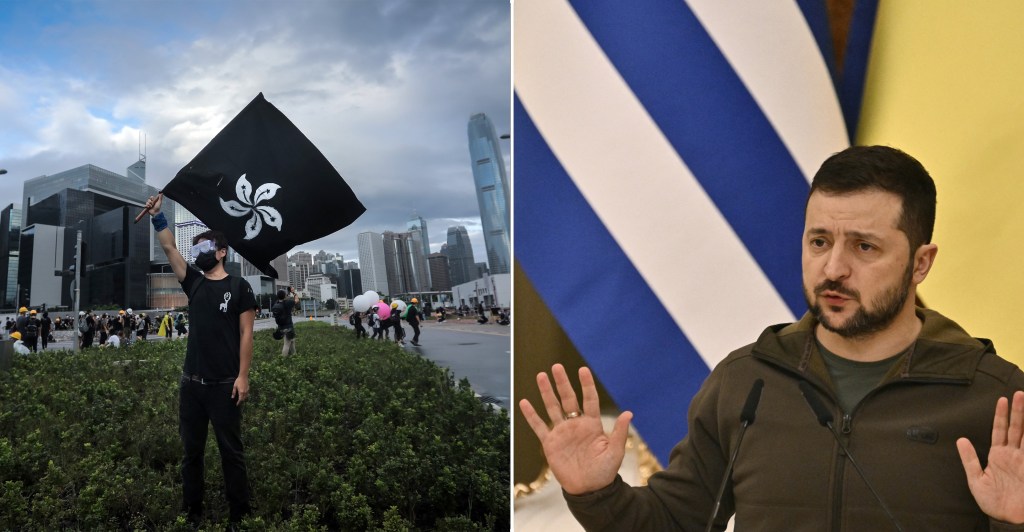They’re shown for mere seconds, often buried in the background and ignored by most Netflix viewers other than the eagle-eyed.
But inconspicuous as they are, nine lines etched on maps have been causing the streaming service to take the drastic step of pulling shows, turning the influential entertainment platform into a battleground of competing geopolitical interests.
Videos by VICE
Netflix on Monday yanked episodes of Australian spy drama Pine Gap from its platform in the Philippines, after its government complained about the nine marks being depicted for some 10 seconds across two episodes—an act it said violated the country’s sovereignty.
“Certain episodes of Pine Gap are unfit for public exhibition,” said the Philippines’ Department of Foreign Affairs when it announced that two episodes of the show—the second and the third—were ordered off local Netflix.

The significance of showing the so-called “nine-dash line” will be lost on many, but the strong official response to them forms part of a regional pushback against what many Southeast Asian countries consider a coordinated propaganda campaign by the Chinese Communist Party justifying its claims over waters demarcated by the U-shaped line.
“China has been pushing its line on every possible platform you can imagine,” Richard Heydarian, author of Asia’s New Battlefield: The US, China, and the Struggle for the Western Pacific, told VICE World News. “It has been aggressively leveraging its market size and global influence essentially to bludgeon celebrities and corporations into submission and into toeing its line, and essentially echoing its talking points.”
China claims virtually the entire South China Sea, a busy shipping route believed to be rich in oil and natural gas reserves. As China pushes its claims, the nine dots have proliferated across cultural products, outlining a U-shaped demarcation that Beijing claims to have historical rights over, but which Vietnam, Malaysia, Brunei, the Philippines, and Taiwan say infringes on their sovereignty.
In 2016, an international tribunal in The Hague ruled that China’s nine-dash line had no basis in international law, while the Philippines, which filed the case, was legally entitled to an exclusive economic zone. China rejects the ruling and continues to assert its claims.
Competing claimants have sought to push back, and no fight is too small.
Before the two episodes of Pine Gap were removed from Netflix’s Philippine service, Vietnam in July had the entire series removed from the local Netflix platform over the nine dashes. Netflix and the producers of Pine Gap did not immediately respond to VICE World News’ requests for comment.
And in August last year, Vietnam successfully called for the Chinese show Put Your Head on My Shoulder to be removed from Netflix for a second-long, blurry depiction of the dashes. Even animation wasn’t spared. In 2019, DreamWorks film Abominable was pulled from cinemas in Vietnam, Malaysia and the Philippines for the same reason. School textbooks in Australia, a drone flying app, and even maps on the website of fashion retailer H&M have similarly sparked local outrage in recent years.
With China’s manufacturing muscle, the nine-dash line has begun turning up in unexpected places. Maps and globes made in China that show the disputed maritime border have made it to retail stores as far as Costco in the U.S., and they are ubiquitous in other countries like the Philippines, where they’ve ended up in classrooms and on library shelves.
Gregory Poling, director of the U.S.-based Asia Maritime Transparency Initiative, told VICE World News that outrage from the likes of the Philippines and Vietnam over the dashes are best understood through this lens.
“This is the latest in a series of such censorship moves by claimants trying to prevent the normalization of China’s claims,” he said. “It started with Beijing about a decade ago trying to force companies, both foreign and domestic, to include the nine-dash line (and Taiwan) on all depictions of China. That soon led to self-censorship in which even foreign academic journals insisted on putting the nine-dash line in maps to avoid China’s anger.”
Now, when trying to watch the show on Netflix in the Philippines, taking the place of the pulled episodes is a title card reading: “This episode removed by government demand.”
For Heydarian, the continued inclusion of the nine-dash line in a range of cultural products represents a lack of consideration for the claims of Southeast Asia’s less geopolitically influential nations over the issue.
“It’s one thing for Western companies and cultural productions to toe the Chinese line because they got a heavy response from the Chinese. It’s another thing for them to continue to do that after other countries in the region also made their strong feelings very clear,” he said.
“Companies tend to respond by saying, ‘Of course, we are sensitive to the sentiments of the Chinese people.’ Now, let’s see if they’re also sensitive to the sentiments of other people in the region.”
Follow JC Gotinga on Twitter.






